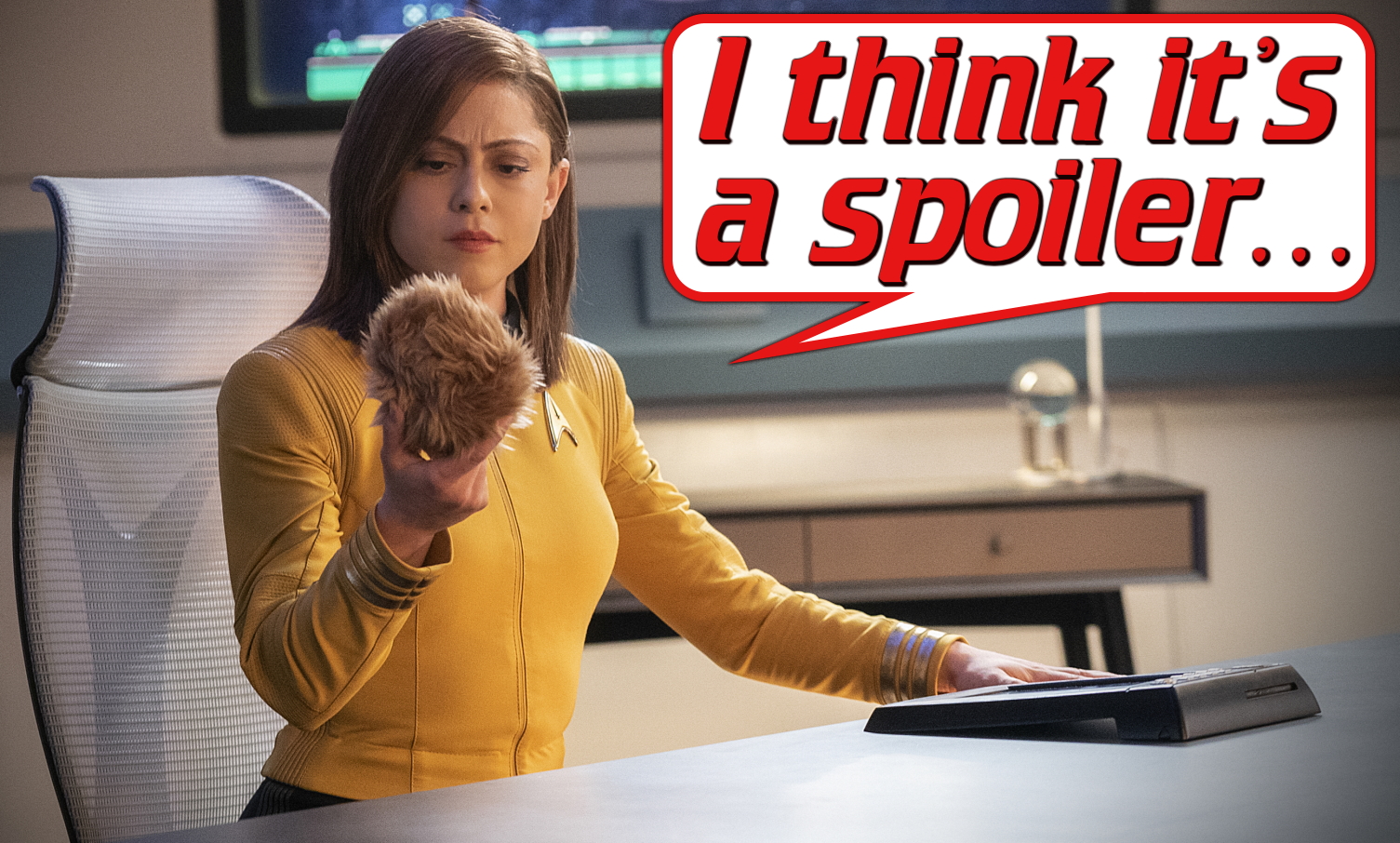
Spoiler Warning: There are spoilers ahead for Star Trek: Picard Seasons 1-3. Spoilers are also present for the following Star Trek productions: The Wrath of Khan, The Next Generation, Deep Space Nine, and Discovery.
For the first time since the beginning of Season 2, I had a genuinely wonderful time with Star Trek: Picard. This week’s episode, Seventeen Seconds, had none of the pacing concerns that were present earlier in the season, and practically every moment was tense, exciting, and thoroughly enjoyable. Season 3 is finally hitting its stride, and if the next seven episodes reach the high bar set by Seventeen Seconds, we’ll be able to consider it a rousing success by the time the curtain falls.
But as the dust settles on Seventeen Seconds, there’s a question burning at the back of my mind that I can’t seem to shake. And here it is: did Picard blow its big reveal too early? I mean, we’re only three episodes into a ten-episode season, and it now feels like we know who the “real” big bad of the season is going to be: the rogue changelings. Should this have been dragged out for another episode or two, perhaps with Worf and Raffi taking longer to figure things out?
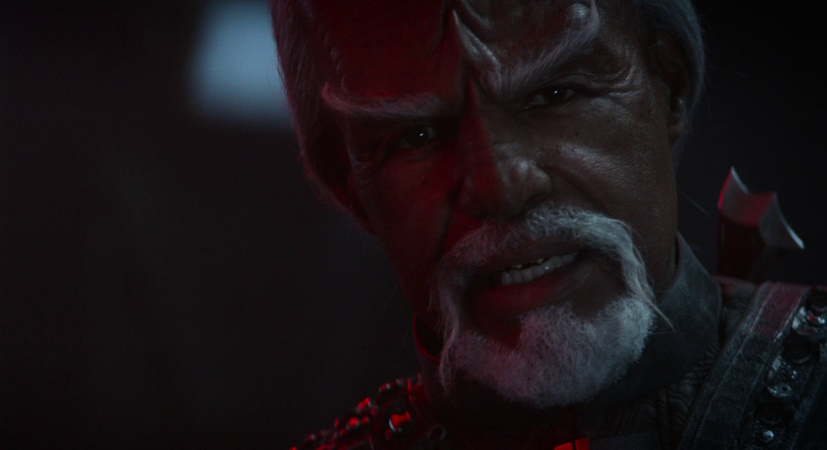
So let’s talk about this big revelation, because it’s something that a lot of fans had been wondering about. Pre-season interviews with members of the cast and crew had promised a connection with Deep Space Nine – the one Star Trek show from the ’90s that hasn’t gotten as much attention or love from the modern franchise. This connection came with the inclusion of the changelings, seemingly a rogue faction; an offshoot of the Founders who are bent on causing havoc for Starfleet and the Federation.
This angle is a genuinely interesting one to explore – but it has to be handled delicately in more ways than one! Similar to the Borg, the Founders can be completely overpowered as a faction if the story isn’t well-balanced – and we saw how, in Deep Space Nine, the idea of changeling infiltrators was used sparingly. Too many changelings in too many positions of power will completely throw the story off-balance, and risks making a win for our heroes feel like a bit of a deus ex machina!
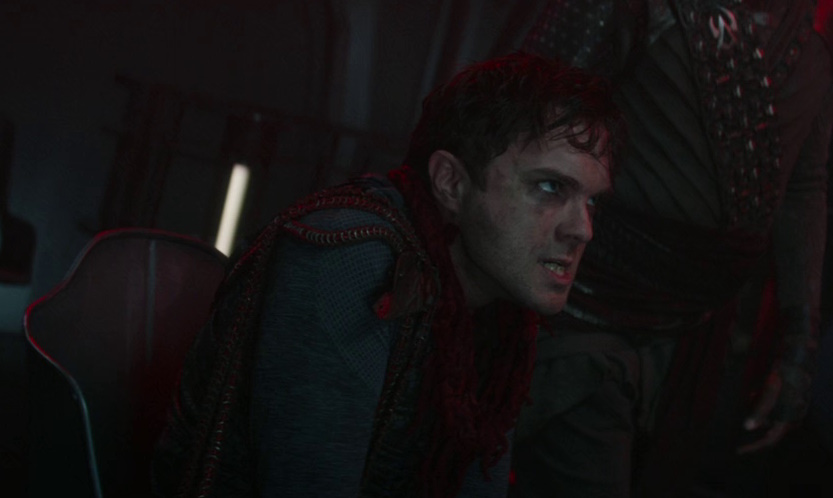
Also, a story bringing back the Dominion and the Founders has to be careful not to tread on the toes of the truly wonderful ending to Deep Space Nine. It was incredibly touching to hear Worf speaking so highly of Odo – his friend in the Great Link – especially in light of the sad passing of René Auberjonois in 2019. But a huge part of Odo’s story in that final chapter involved communicating to his people that peace was an option and that the Federation didn’t pose a threat, so undoing that would obviously not be my preference.
And I think that’s where the real genius of this “rogue” faction of Founders could come into play! Rather than saying the Dominion are on the march, what Worf and Raffi have uncovered seems to suggest that only some members of the changeling race are involved – that a schism has been created in the Great Link between followers of Odo’s peaceful path and those who disagreed.
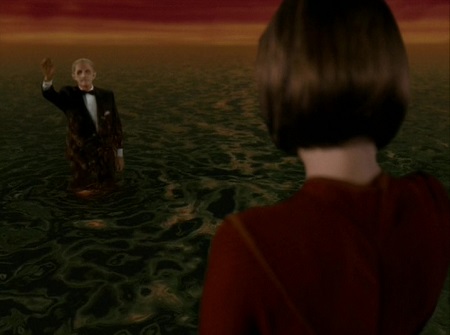
In short, the line to walk here is a tricky one. It requires the story to keep Odo’s reputation intact, with the touching end to his story not being in any way damaged, undone, or overwritten. But at the same time, it has to find ways to make the rogue Founders engaging and menacing – and to give them motivation for their actions that doesn’t merely boil down to “we’re evil for the sake of it.” On the evidence presented in Seventeen Seconds, there’s reason to hope that the writers and producers have struck the right balance.
Having changelings on the loose also raises the stakes in terms of mystery! We know that Picard isn’t a changeling, and it seems safe to assume that Jack and Dr Crusher aren’t, either. But practically everyone else should fall under some degree of suspicion – and perhaps that could explain why Picard will turn to synthetic beings like Lore and Professor Moriarty: they may be the only ones he can be certain haven’t been replaced by changelings! But we’ll save the speculation for my next theory update.
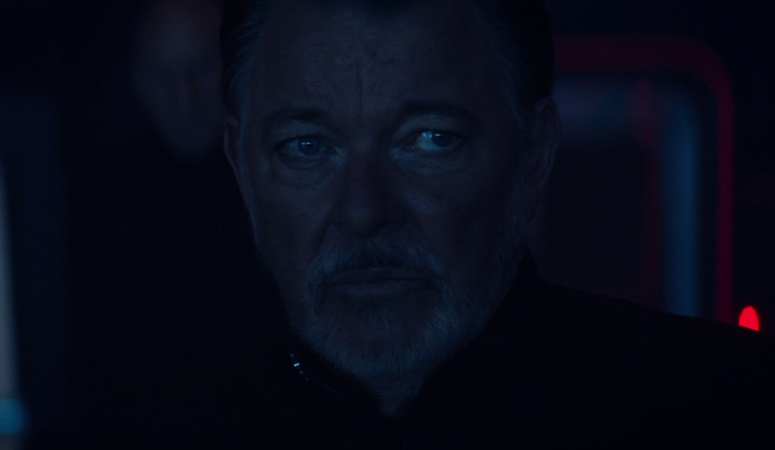
I’m a huge Deep Space Nine fan – it could well be my favourite Star Trek series, all things considered. So bringing back a major faction from that series is fantastic, and it feels like Picard is leaning into Deep Space Nine in a way that modern Star Trek really hasn’t until now. Sure, there have been appearances in Lower Decks and a couple of obscure references in Discovery… but this feels like our first real opportunity to add some kind of epilogue to the Deep Space Nine story. The inclusion of Worf – who was, of course, a main character in the second half of DS9′s run – means that Picard can make these connections in a way that the series really wouldn’t have been able to before, and I guess my only real concern is that this clear fan-service won’t be too offputting or confusing for people who enjoyed The Next Generation but either haven’t seen Deep Space Nine in a while or who may have skipped it during its original run!
Making content “for fans” always carries this kind of risk. As Trekkies, you and I have almost certainly seen every episode of Deep Space Nine multiple times – even the irredeemably crap ones like Move Along Home. But Picard is trying to appeal not only to Trekkies like us, but to a more casual audience, including people who may not have liked Deep Space Nine or who didn’t stick with it for its entire run. I know several people in my personal life who are in that category – fans of The Next Generation and even of Voyager, but who for whatever reason didn’t stick with Deep Space Nine.

In Seventeen Seconds, we got enough exposition and backstory to cover the basics. The show can’t spend all of its runtime bringing viewers up to speed on what happened in 175 episodes of Deep Space Nine, but what it has to do now is convey the basic points so that the story will be understandable for folks who didn’t watch or don’t remember those narrative arcs. Seventeen Seconds got this right, providing enough of an explanation without wasting too much time getting bogged down in it.
Again, Worf was well-used here. He didn’t simply drop heavy-handed exposition, he explained who the Founders were and who this rogue group may be in a brief but informative sequence. This older version of Worf, having had many off-screen experiences over the past thirty-plus years of in-universe time since we last saw him, feels like a mentor or elder statesman – precisely the kind of character to provide this kind of exposition in a way that feels natural. And natural is exactly how it felt!
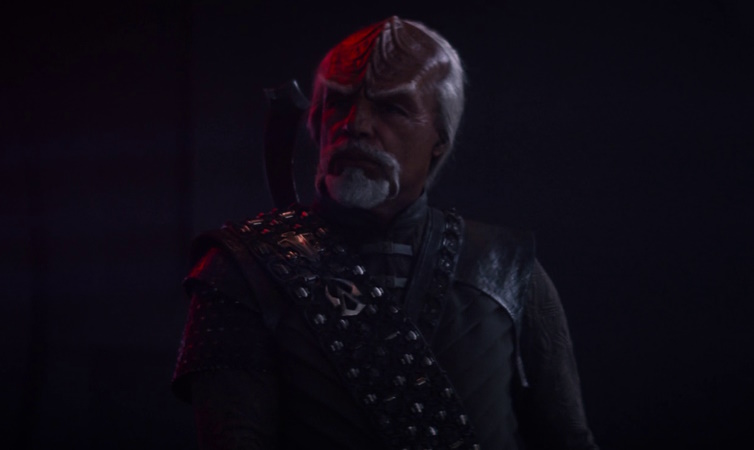
Sticking with returning classic characters, pre-season marketing focused on the return of the Enterprise-D’s crew for almost a year… so it’s odd, in a way, that three episodes in we still haven’t seen all of them, and that those we have seen aren’t all working together. Seventeen Seconds gave us Dr Crusher’s first significant on-screen interaction with Picard, and of course we’ve had Picard and Riker teamed up for three episodes now. But Worf is still off in his own little narrative box with Raffi, and there’s no sign of Geordi or Lore. Deanna Troi was briefly seen via a flashback, but again, that was hardly a major appearance.
One of the criticisms fans have made in the years since The Next Generation and its films were on the air is that not every character got enough to do. Everyone got spotlight episodes, of course, but genuine ensemble pieces where everyone made a significant contribution to the story were relatively uncommon, and in some episodes, characters like Dr Crusher would only get a handful of lines. Picard Season 3 was an opportunity to fix that – or at least to give these characters a final mission in which they could all collaborate and work together across a single, ten-episode-long narrative. I’m acutely aware that this is Picard’s final outing, and with basically one-third of the season already over, time is running out to make good on those pre-season promises of major roles for all of the returning characters. I’m hopeful that there will be enough time to have an enjoyable reunion with everyone – but it’s at least worth noting that it hasn’t happened yet!
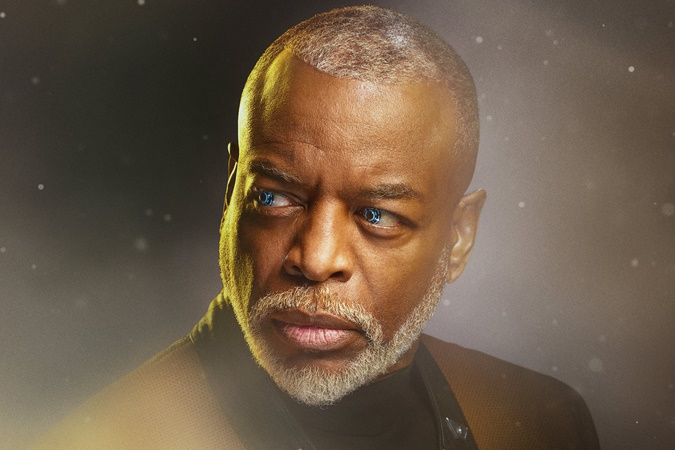
Another character who played a big role in pre-season marketing was Amanda Plummer’s Vadic. I said last week that I was a little concerned about Vadic, and how her claim to only be interested in Jack Crusher for the sake of money didn’t really justify her over-the-top presentation. As we learned in Seventeen Seconds, Vadic has at least one changeling ally: the spy embedded aboard the Titan. That ties her in some way to the rogue changelings and their conspiracy – and the portal-weapon that she used was similar (or identical?) to that used against the Federation base at the beginning of the season. But the extent of Vadic’s involvement is still up in the air – and I don’t think we have enough evidence at this stage to say that she is definitely a changeling herself!
In fact, I was struck by Vadic’s absence in Seventeen Seconds. She had a couple of moments in which we saw her happily deploying her portal-weapon, but we didn’t get to spend much time with her at all, which is certainly an interesting decision. As the main named villain of the season so far, I think it’s important to get to see her side of the story – and not merely to hear it second-hand via Worf or some other character. Obviously that doesn’t mean we need to have a lot of scenes with her in every episode, nor that her side of the story needs to be told at such an early stage… but it should happen some time!
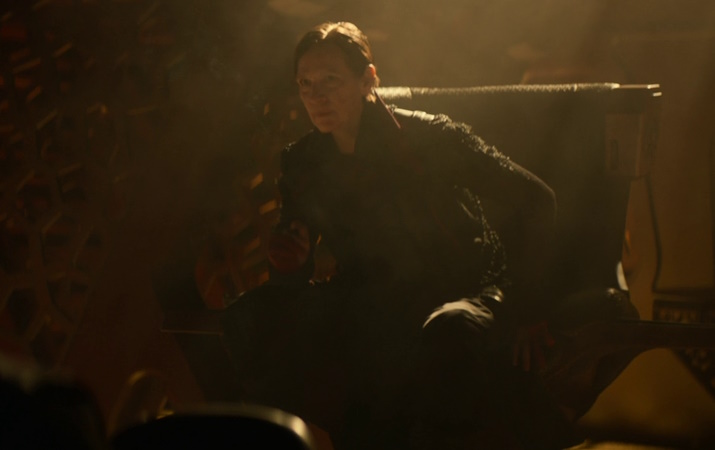
Since I’ve already mentioned Vadic’s portal-weapon, let’s talk about that for a moment. I… was not blown away by this new piece of tech, to be honest. Don’t get me wrong, it’s far from the worst macguffin that Star Trek has thrown at us, but I felt that there was a considerable disconnect between its visual appearance and the way in which the narrative presented it.
In brief: the way the portals appeared on screen made it look like they should be relatively easy to avoid, even for a starship like the Titan. In this specific case, where Vadic’s goal appeared to be to force the Titan to remain inside the nebula, it makes sense to use a portal in this fashion… but that’s a very niche use case, and the military applications of such a device, especially in three-dimensional battles in outer space, don’t seem readily apparent – which also calls into question parts of Worf and Raffi’s story. It’s a powerful weapon, as we’ve seen, but one that I’d argue has some pretty big limitations.
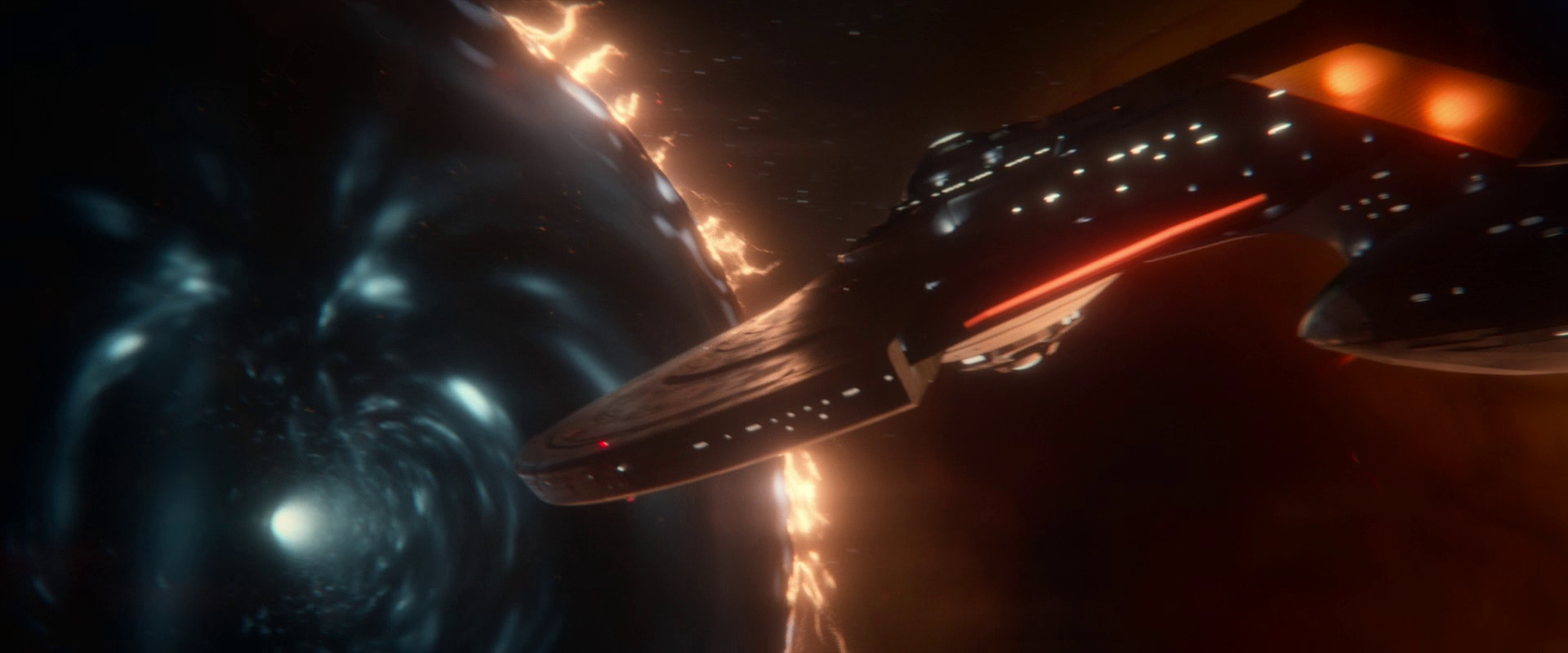
The portal-weapon is also kind of unoriginal, with similar designs having appeared in everything from hard sci-fi all the way through to the likes of Who Framed Roger Rabbit. The most readily apparent point of comparison is to the video game Portal, which shares a name with this device. Again, I don’t necessarily hate it – and I concede that my criticisms are rather nitpicky – but I really feel a disconnect between the relatively small portals that appeared on screen and the way in which the crew of the Titan seemed to respond to them!
But there may be more to the portal-weapon that is yet to be revealed, and it may have additional uses later in the season. I can certainly see it being a useful tool… perhaps it could be used at the last second to transport characters away from danger, for example. I also suspect that Captain Vadic may meet her end by being spliced through her own portal-weapon! But maybe we should save that for my theory update.
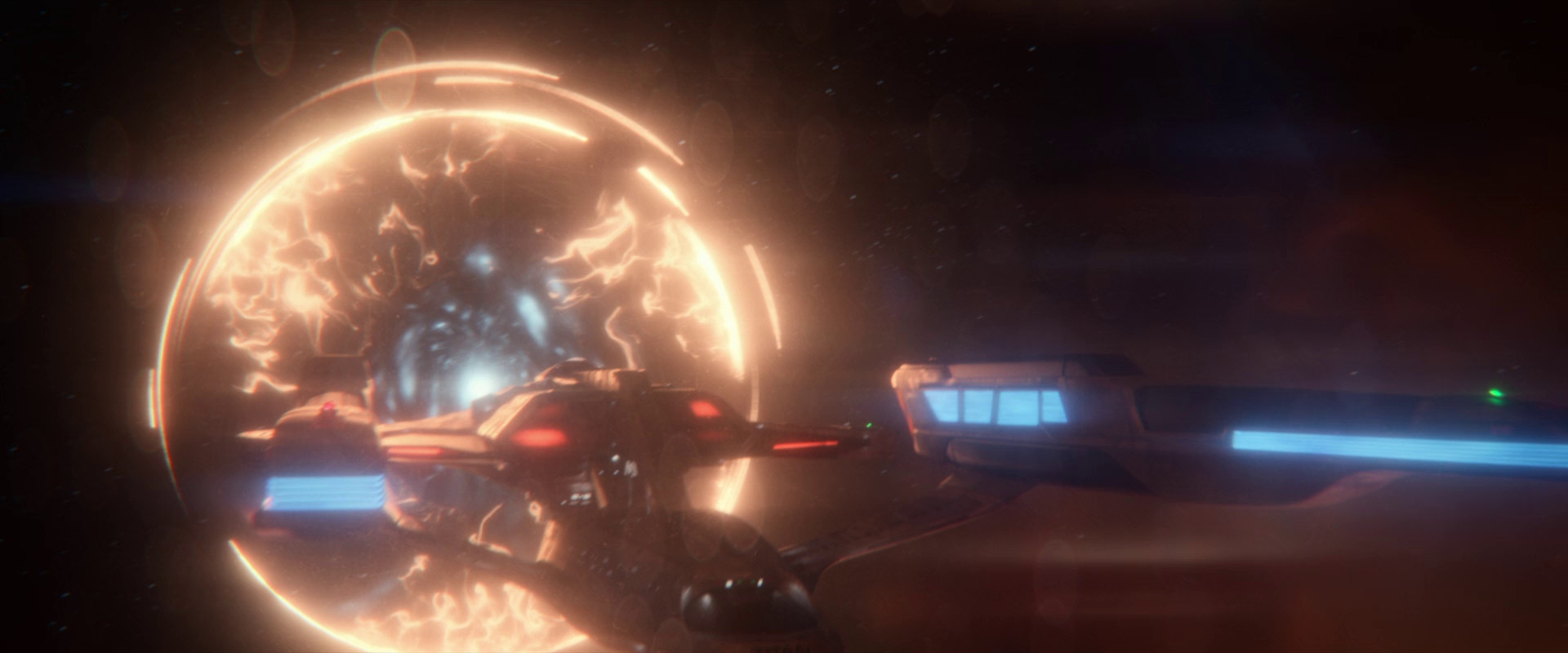
After a couple of weeks in which Picard looked faded, washed-out, and far too dark, I was pleased to note that this week, Seventeen Seconds only looked far too dark! The problems with colour temperature that had been present in the first two episodes of the season appear to have been fixed, at least on Amazon Prime Video, and I hope that particular issue won’t reoccur. It was a shame that it happened in the first place – and it makes Paramount look pretty unprofessional and incapable, let’s be honest – but at least it has been belatedly repaired.
The darkness issue is still ongoing, though, and this one feels much more like a creative choice. The lights on the Shrike, the Titan, the Eleos, La Sirena and in flashbacks in Guinan’s bar too, were all turned down, and the low brightness is noticeable even when compared to Seasons 1 and 2. With the colour temperature being corrected, there weren’t any scenes this week that I felt were unwatchably dark, or where main events couldn’t be perceived, but there are details in the periphery that I’m sure are functionally invisible as a result of this very deliberate choice of cinematography.
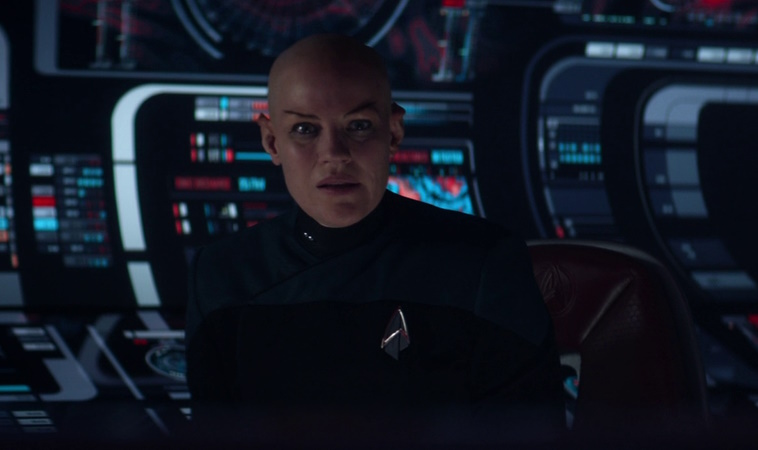
CGI and visual effects were good in Seventeen Seconds, though, and I felt none of the dreaded “uncanny valley” that I flagged up in the season premiere. Whether that’s because there’s been any kind of change in the visual fidelity of Picard or whether I’m just getting reacclimated to the way Paramount and the Star Trek franchise handle their animation and visual effects… well, who can say, really? I’m just satisfied that I’m not being pulled out of the immersion every time the action cuts to the ships in space!
One particular sequence that I’d like to draw your attention to came right at the end of Seventeen Seconds. The moment where the disabled Titan appeared to “fall” – i.e. be dragged – into the nebula’s gravity well was spectacular, and successfully conveyed a sense of helplessness as the ship appears to be headed to its destruction. The effect was akin to a watercraft “sinking” under the surface – and that point of comparison feels apt. It was incredibly well done, and the perfect way to set up a cliffhanger ending.
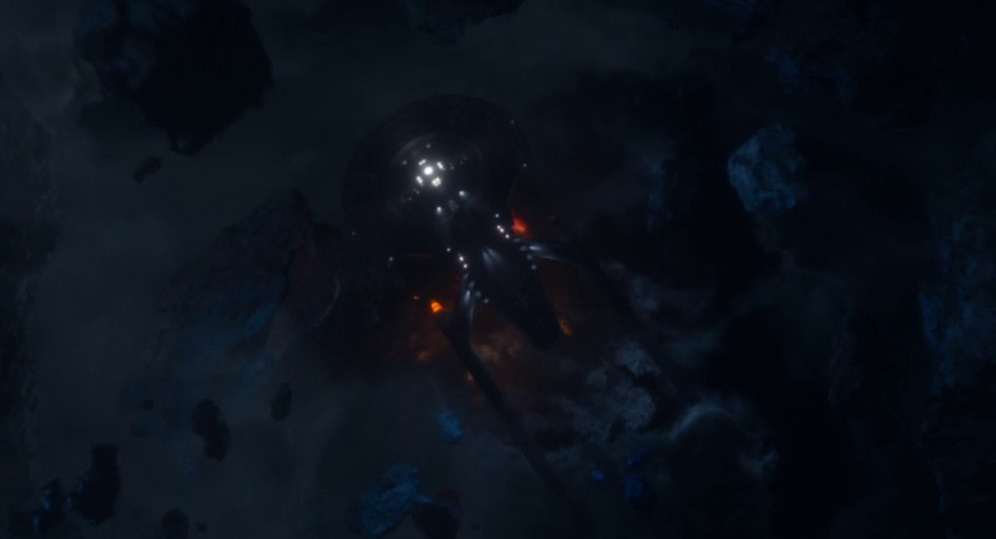
One visual effect that could have been difficult to pull off was that of the changelings in their liquid form. In the 1990s, when Deep Space Nine was on the air, the effect used for Odo and other changelings looked good – by the standards of the time. In 2023, however, that “smooth and shiny” CGI effect is outdated, and the way in which it was brought up to modern spec was solid. The new “changeling goo” feels like a natural progression, and the kind of look that a remastered Deep Space Nine might want to adopt!
There are subtle changes, though. The Deep Space Nine effect was an amber, almost honey colour, whereas the new animation created for Seventeen Seconds had a duller, slightly greyer tone, perhaps closer to an organic compound than anything we’d seen in Deep Space Nine. In addition, the new visual effect feels much more substantial and textured, seeming to flow or ooze in a natural way. I like it, and I think it’s a great update to a classic visual effect!
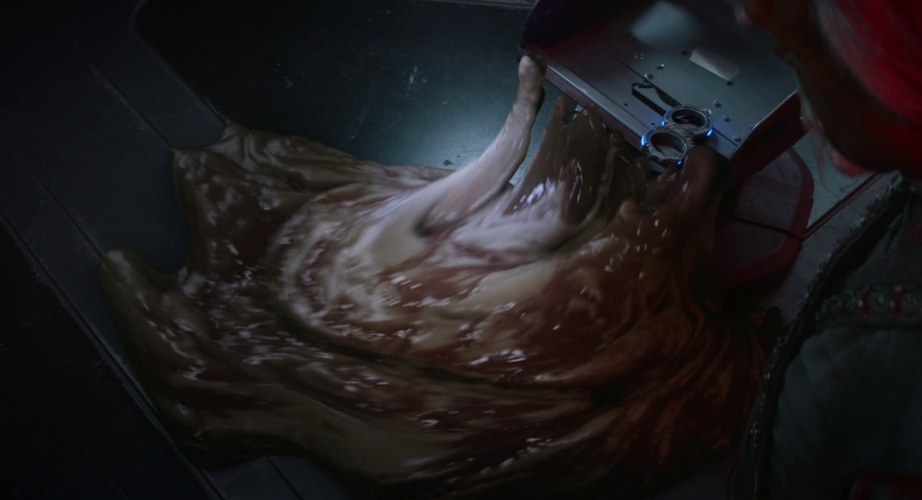
As mentioned, I feel that the visual effect created for the Shrike’s portal-weapon may have clashed somewhat with the way the weapon was talked about and presented on-screen. But despite that, the effect itself was a clever one, and the way it seemed to unnaturally “bend” the light around it was really neat to see. It reminded me a little of Discovery’s black hole effects in Seasons 1 and 2 – a visual style influenced by the film Interstellar.
The battle sequences between the Shrike and the Titan were great, too, and the technobabble of the nebula “blinding” the Titan’s sensors really amped up the tension. Seventeen Seconds channeled the Battle of the Mutara Nebula from The Wrath of Khan in some of these sequences – but with the addition of forty years’ worth of improvements in visual effects!
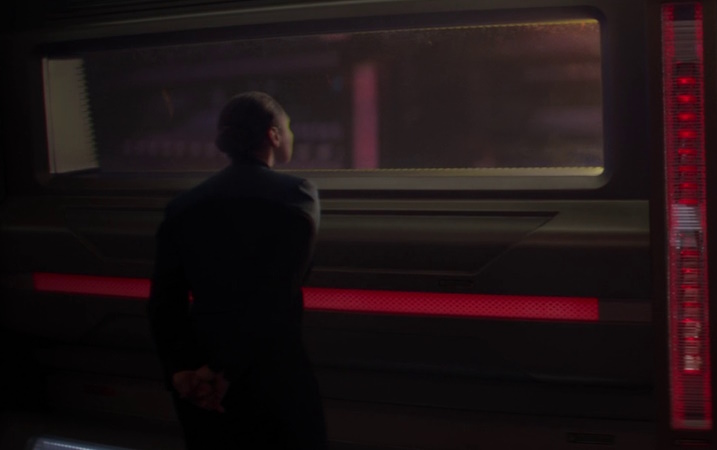
The only thing I’d say about the battle as a negative point is that – to quote Mr Spock from that same film – it “indicates two-dimensional thinking.” The Shrike and the Titan seemed, for the most part, to operate on a two-dimensional plane, not a three-dimensional space, and that was apparent particularly toward the end of the episode as the Shrike was able to “block” the Titan’s escape from the nebula by basically getting in the way. A line or two explaining how the Shrike could accelerate faster than the Titan, or some similar technobabble, could have negated part of this, perhaps.
This was also apparent in the operation of the portal-weapon, at least as presented visually. The relatively small portals opened in front of the Titan, but the ship had multiple routes to avoid it: up, down, left, right, or even simply coming to a halt. Again, this seems to clash with the way the weapon was emphasised in dialogue. Are these nitpicks? Absolutely!
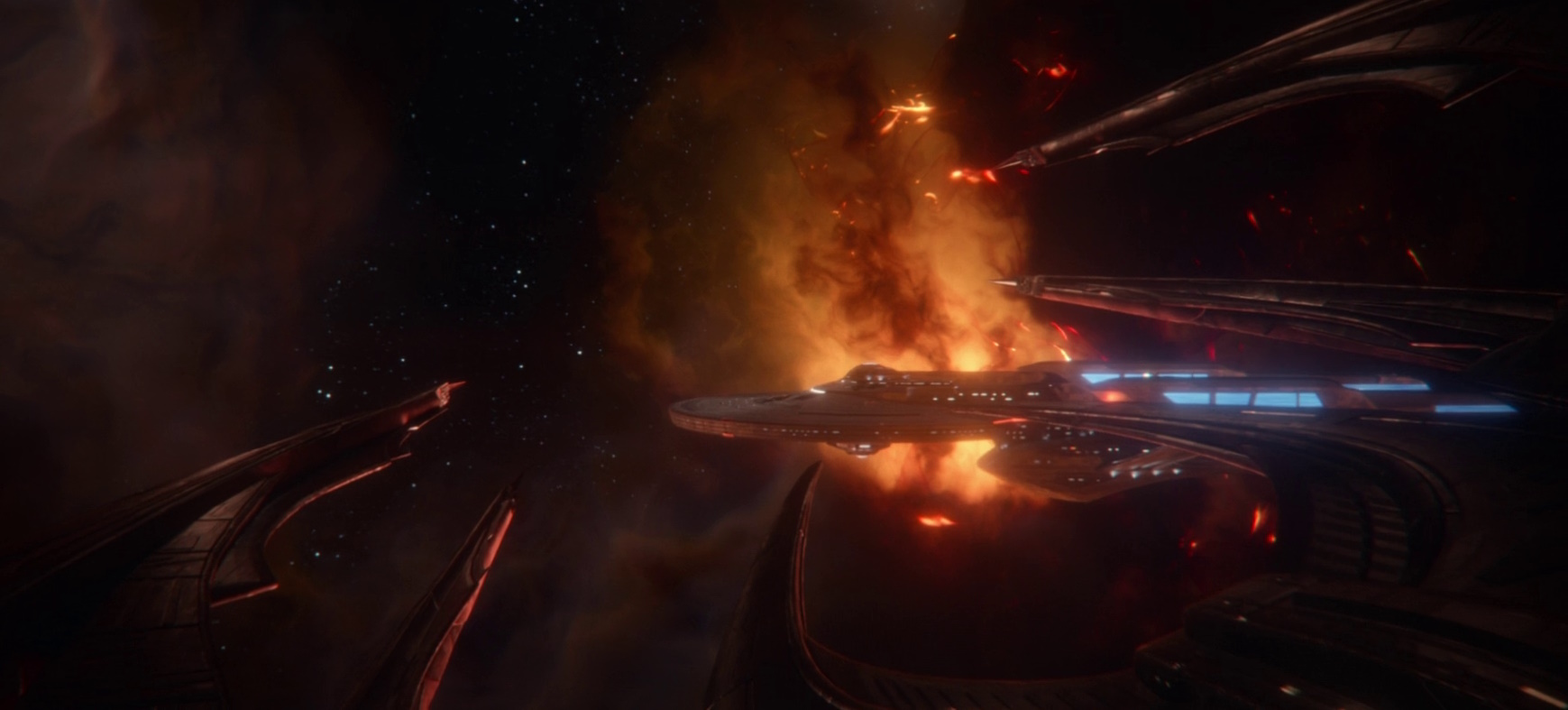
It would have been more impactful had we met the Titan’s changeling infiltrator before he was revealed. This anonymous character may go on to be a bigger part of subsequent episodes, but the revelation that there was a spy aboard the ship was blunted, at least a little, by the fact that it was an anonymous “extra” in that role. Had the officer been someone we’d met, even briefly, it would have been more exciting – especially if we’d never suspected that there was anything unusual about him!
This is, I suspect, a consequence of the relatively short ten-episode season. However, I really do believe it would have been worth doing – it’s something that would have turned up the surprise factor in the episode if it had been done well. A short scene or two featuring this character in his role as a Starfleet impostor would have been good enough to achieve this effect.
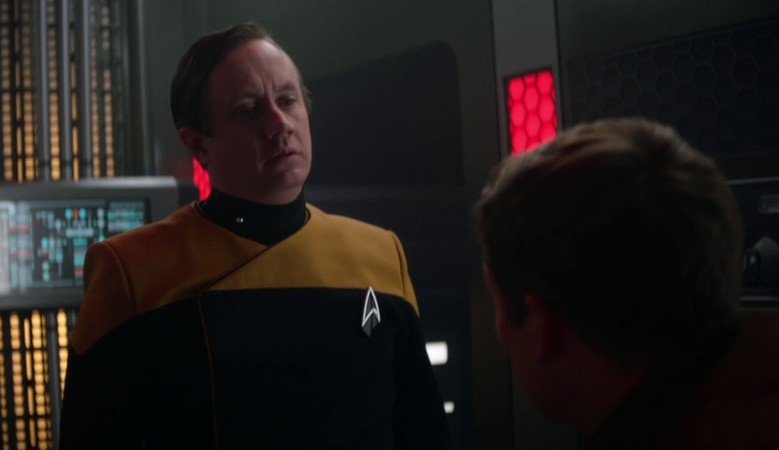
Star Trek has told stories that deal with impostors within Starfleet on many occasions, from episodes like Conspiracy and films like The Undiscovered Country through to the changeling stories in Deep Space Nine like Homefront – and, of course, Discovery’s first season. These stories usually work well and manage to be tense and exciting – but a common hallmark is that we’ve gotten to know the impostor or impostors, at least a little, before the truth of who they are is revealed. In fact, I’d argue that this is a big part of the way this narrative framework is intended to operate; it’s nowhere near as satisfying to say “there’s a spy in our midst!” and then reveal that the spy is just some anonymous background character that we’ve never met.
Look at how well the Michael Eddington story worked in Deep Space Nine, because that’s probably the best example of this kind of storyline in the Star Trek franchise. We got to know Eddington over the course of half a dozen episodes prior to his big reveal, so when he turned out to be a Maquis operative, it was a heck of a shock! The way the changeling infiltration storyline unfolded in Seventeen Seconds worked well, and there was some clever direction and editing to have Worf and Raffi’s uncovering of the plot followed up immediately by Jack’s confrontation with the changeling… but the sequence overall could have been improved, in my view anyway, if we’d met this spy ahead of time.
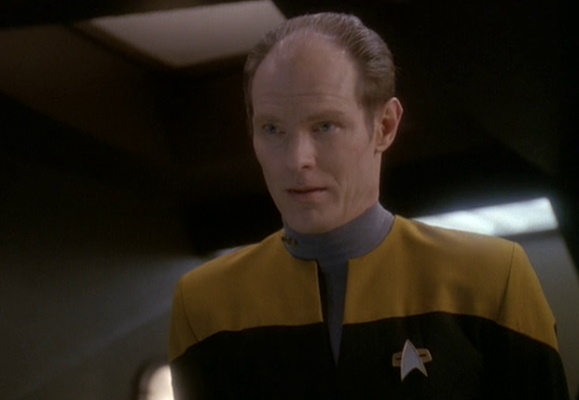
When the Titan’s science officer repeated multiple times that the nebula the ship was trapped in was behaving abnormally, my first thought was simply this: I sincerely hope that the story isn’t going to say that this whole thing is one elaborate trap! It’s too much of a contrivance to say that Vadic was purposefully trying to trap Picard and the Titan in the Rykon system given the difficulty involved in getting there and the seemingly obscure location of this nebula.
On the other hand, the fact that this isn’t a normal nebula – and could even be “life, Jim, but not as we know it” – could open up some genuinely interesting story ideas! I feel certain that the “organic” elements of the nebula wouldn’t have been emphasised so prominently were they not going to be significant to the plot later on – but how, exactly, is shrouded in mystery right now.
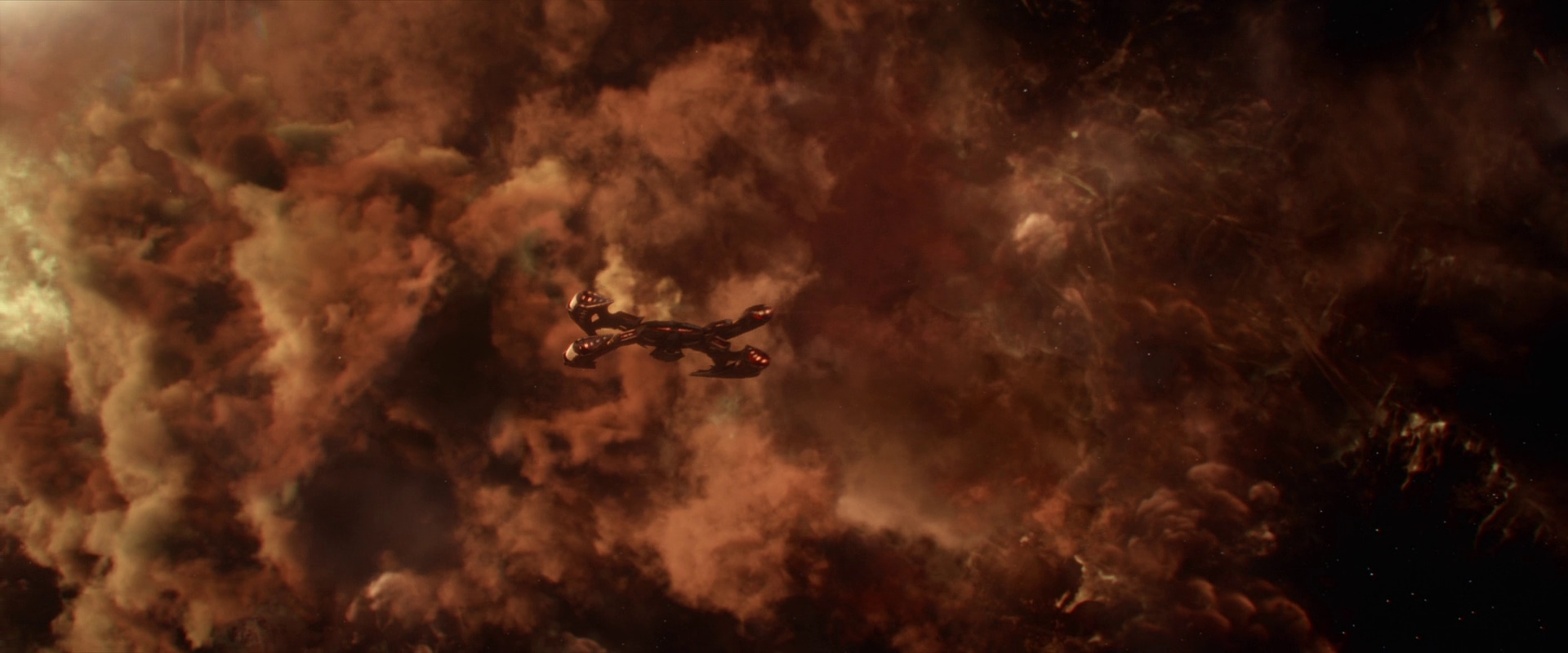
There were two conflicts central to the character stories present in Seventeen Seconds: one between Picard and Dr Crusher and a second between Picard and Riker. We’ll talk about each in turn, but I think that both worked well in the context of the story.
It was interesting to see Picard and Dr Crusher having this deep and intense conversation about their son – and before we get into specifics, there’s one thing that jumped out at me. Here we have two older characters engaged in what is typically a storyline we’d associate with younger characters: pregnancy, paternity, and raising a child. It wasn’t lost on me that Sir Patrick Stewart is now in his 80s and that Gates McFadden is in her 70s, yet here they were having a discussion that would suit characters a generation younger!
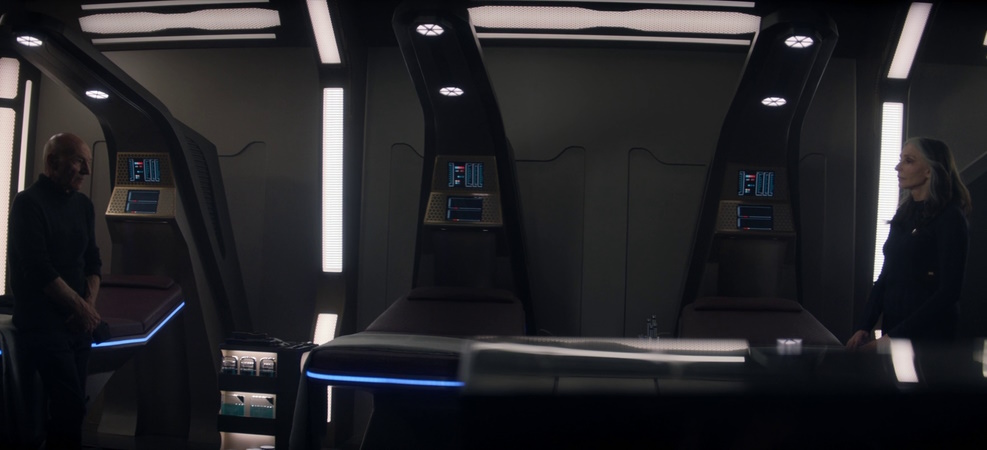
One of the themes that we’ve started to see in Picard’s third season is that of age – something that was also present in The Wrath of Khan, which serves as part of the season’s inspiration. Entering retirement, leaving friends and colleagues behind, and coming to terms with changes to both oneself and the wider world have all been touched upon – though not to quite the extent I’d been expecting, perhaps.
But this storyline – and especially Picard’s conversation with Dr Crusher – felt like it rolled back the years for both of them significantly. The intense discussion of whether Dr Crusher should have told Picard about her pregnancy is something we might’ve expected from far younger characters, so to see it handled – and handled so well – in Seventeen Seconds was great. It completely twisted the expected theme of age, and arguably also reinforces the notion that, in Star Trek’s advanced and optimistic future, humans can live longer, healthier, and more active lives.
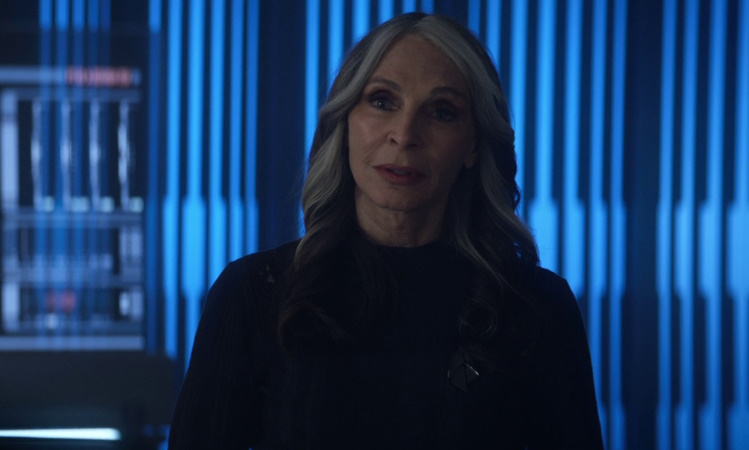
There was also a moment in the turbolift after Jack’s injury – the titular “seventeen-second” ride that Riker had talked about in a flashback sequence – in which Picard felt very much the new father, which again gives his story a far more youthful edge than I’d been expecting. Although the focus was on Jack’s injury and survival, those seconds with Picard in the turbolift felt akin to watching an anxious soon-to-be dad in the delivery room, waiting on the birth of his son.
There was deliberate symmetry to the turbolift ride that cut through the Picard-Riker fight, and perhaps has set the stage for their potential reconciliation next week. It’s also noteworthy that Riker was hardly youthful when he became a father – and as someone whose parents were older when I was a child, I appreciate that Star Trek is putting older characters into this position. Not every child is born to young parents – increasingly so, in some communities and cultures – and while many television shows and films do a wonderful job of highlighting the particular problems and issues facing teen parents, for example, it’s actually really nice – and dare I say a little cathartic, personally speaking – to see Star Trek acknowledging that some people become parents later in life. That wasn’t the main focus of Seventeen Seconds in any way, but it’s something that I personally can take away from the story.
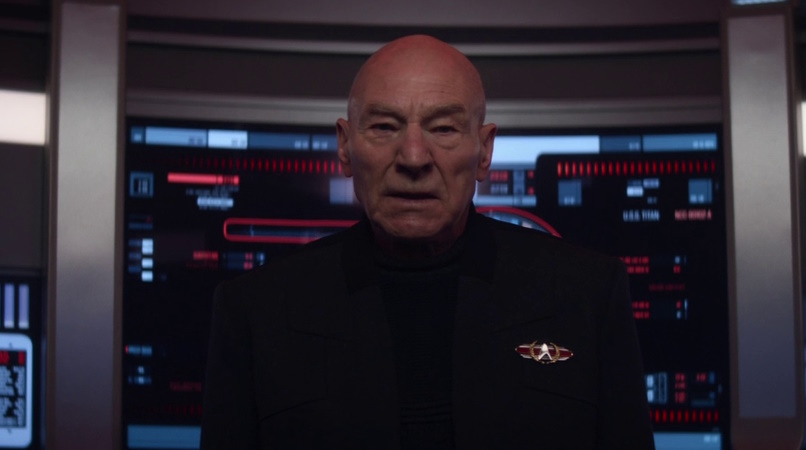
Before we get into the weeds too much, let me just say this: I suspect that the decision to pit Picard against both Dr Crusher and Riker in the same episode may not go down well with every fan! Part of the appeal of Picard Season 3 was in reuniting the cast of The Next Generation, and while the characters had disagreements during that show’s run, by and large they were on great terms. Some might say their friendships were a little too perfect, which is why Deep Space Nine and Voyager tried to insert more disputes between characters, and created characters from different backgrounds who had conflicting motivations.
But if the draw of an Enterprise-D reunion was bringing people back together for one last adventure, there’s a danger that these kinds of conflicts – especially if they drag on for multiple episodes – could detract from that, and I understand that argument even if I’m not personally fully signed-up with it. I hope that both conflicts will come to a satisfying conclusion, and that in fairly short order we can see Picard and his crew back on friendly terms – after all, that is a big part of what made this season interesting as a concept in the first place!
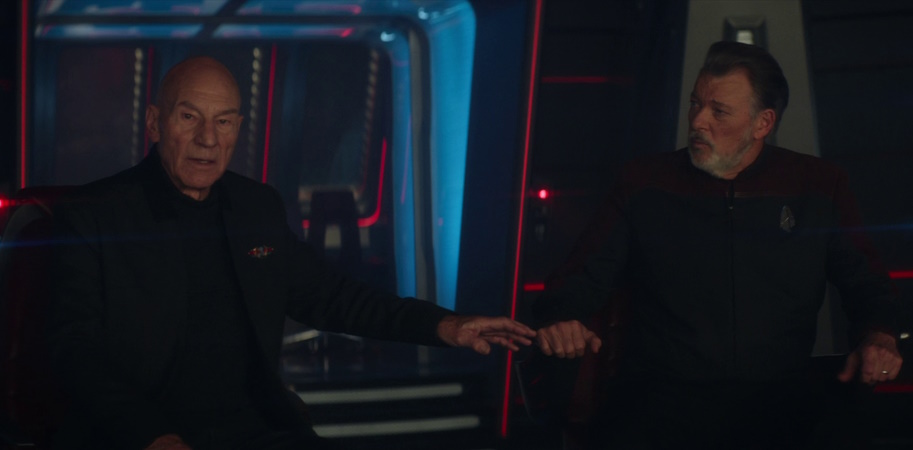
My take on the first conflict is this: Dr Crusher is both correct in her belief that the son of Jean-Luc Picard would be in danger, while also being horribly inept when it comes to keep him “safe.” By leaving Starfleet and the Federation behind to go on a twenty-year unsanctioned medical mission, Dr Crusher has placed Jack in at least as much danger – if not more – than she ever would have if she’d remained in Starfleet. And that’s where this argument and this whole storyline could come unstuck.
Based on everything we know about Starfleet and the Federation, it’s generally a very safe environment. I could absolutely entertain the idea that Dr Crusher would feel a need to resign her commission in order to dedicate herself to raising Jack full-time… but the idea that she felt she had to do so beyond the borders of the Federation, in what is clearly a very complex and dangerous galaxy, risks undermining this aspect of the story. At best I guess we’ll have to call it a contrivance, something necessary to drive this part of the plot forward. At worst… well, it makes Dr Crusher look like a bit of an idiot. A dangerous idiot.

This side of the story also feels as if it’s chafing uncomfortably against a massive part of the main plot from Season 2 – which was on our screens less than a year ago. The entire reason for the Confederation timeline, the mission back in time, and Q’s scheme was, at least as Q explained it, because Picard himself had been unable to let go of childhood trauma enough to settle down in a relationship. We’ve learned in Seventeen Seconds that he and Dr Crusher were once again pursuing a romantic relationship in the months or years after Nemesis, and Picard even stated that he would have been willing to be a husband and father, and that his reasons for not fully committing to Beverly were more to do with Jack Crusher Senior – his deceased best friend.
The story of Season 2 was already a terribly convoluted one that was on shaky ground, so anything that undermines it is a problem. And unfortunately, there’s no escaping the fact that parts of this storyline, as presented in Seventeen Seconds at least, are in that position. The writers tried to throw a bone to this, with Picard making an oblique reference to last season’s events, but that didn’t really go far enough and certainly hasn’t saved this aspect of the story.
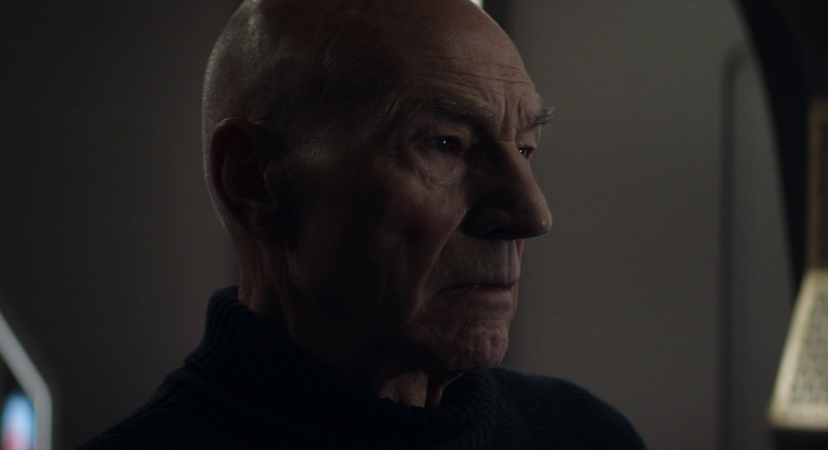
We’ll have to go into more detail about this on another occasion – perhaps after having seen the entirety of Season 3 – but there are actually quite a few areas where these two productions seem to grate against one another. What’s so surprising about that, of course, is that Seasons 2 and 3 went into production back-to-back, with the same production team and showrunner present for both. I’m not saying I wanted or expected Seasons 2 and 3 to form a single ongoing story – though they certainly could have if a suitable story had been written – but it feels odd to see so many small and large points of conflict.
But we’re drifting off-topic! Picard’s second conflict was with Riker, and while the two men seemed to work together seamlessly at first, a radical difference in approach became apparent as the episode wore on.
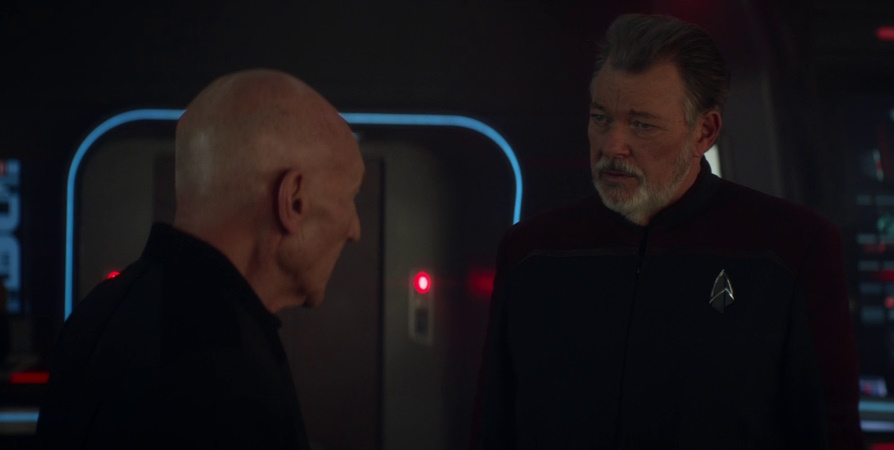
So there’s a dichotomy here for me. On the one hand, I don’t particularly dislike this idea, and I feel that Seventeen Seconds handled it well. The conflict felt organic and natural, and it was presented as exactly what it was: a genuine difference of opinion and approach. The episode didn’t frame either Picard or Riker as being right or wrong, and there are interpretations as to how to approach a battle of this nature.
But on the other hand… the more I think about it, I can’t escape a simple reality: pitting Picard and Riker against one another would not be my choice, if for no other reason than the story, at least at this point, doesn’t seem to need it. I’ve spoken about this before, particularly in relation to Discovery, but it feels as if this extra element of drama has been concocted and then forced into a story that was already so tense and dramatic that it didn’t need it. Picard, Riker, and the rest of the crew of the Titan were already in a life-or-death, impossibly high-stakes confrontation, so throwing in a personal spat between two main characters didn’t really ramp that up; the tension and drama were already turned all the way up to eleven.

That being said, I have a theory about Riker that, were it to pan out, would completely explain this and basically negate all of those points of criticism. Even if my theory is wrong, the disagreement may end up resolved within the next episode, and that would set the season back on what feels like the “right” path: the path where these characters get back together for one final mission.
Just because I wouldn’t have chosen to tell a story in which Picard and Riker find themselves at loggerheads doesn’t mean that it didn’t work well in Seventeen Seconds, and the way in which their disagreement was built up and then spilled over into argument was well handled. By the time Riker banished Picard from the bridge, we had a solid understanding of both men’s positions and perspectives – and under the circumstances, that’s the most we could have asked from this storyline!
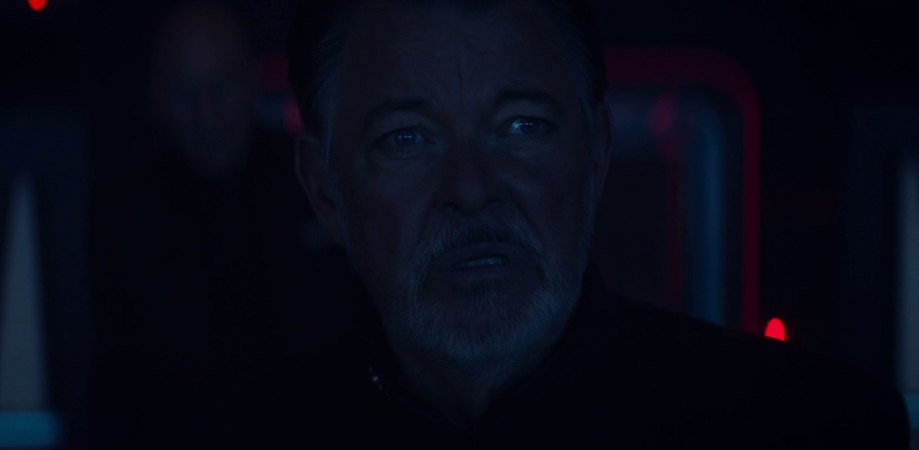
So let’s wrap things up!
Seventeen Seconds was a tense, exciting, and thoroughly enjoyable ride from start to finish, and probably the best episode of Picard since the Season 2 premiere last year. There are nitpicks, as there almost always are, but they melt away when confronted with such an outstanding episode of television.
I’d felt that Season 3 had gotten off to a slow start, but the pacing this week felt perfect. There were no truncated or cut-down moments, and practically everyone got something significant to do. All in all, a great episode!
A few scattered final thoughts:
- I liked the interaction between Seven and Ensign La Forge, showing how Seven has won respect and friendship from her colleagues, even if she doesn’t get it from Captain Shaw. After the “deadnaming” over the past couple of episodes, it was great to see La Forge call her “Seven!”
- Captain Shaw is injured – but not dead! Will he remain in sickbay for the next few episodes… or will he come roaring back, take command of the ship back from Riker, and find a way out of the nebula?
- Surely we’ve gotta see Geordi and Troi next week, right?
- Worf and Raffi were able to track their target pretty easily… is that because of Worf’s skill, or because the story has its focus elsewhere?
- With the Titan disabled, why did Vadic abandon her pursuit? Is capturing Jack no longer her objective?
- Time is a bit of an issue: Dr Crusher says she found out about her pregnancy shortly after she last saw Picard – circa twenty years ago. And I don’t mean to be unkind, but actor Ed Speleers, who plays Jack, is clearly not twenty. A poor casting choice, or are we okay with giving a bit of “soap opera ageing” flexibility here?
Star Trek: Picard Seasons 1-3 are available to stream now on Paramount+ in the United States and other countries and territories where the service is available, and on Amazon Prime Video in the UK and around the world. The Star Trek franchise – including Picard and all other properties discussed above – is the copyright of Paramount Global. This article contains the thoughts and opinions of one person only and is not intended to cause any offence.

